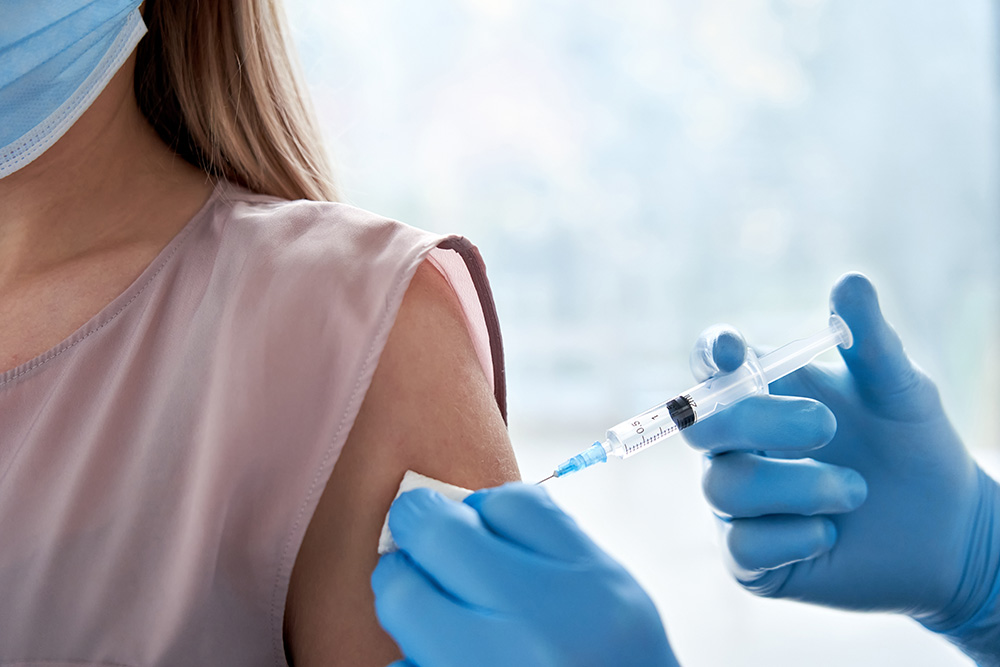FACTS ABOUT VACCINATION
Pfizer-BioNTech
Name: BNT162b2
Manufacturer: Pfizer, Inc., and BioNTech
Type of Vaccine: mRNA
Number of Shots: 2 shots, 21 days apart
How Given: Shot in the muscle of the upper arm
Does NOT Contain: Eggs, preservatives, latex, metals
Moderna
Name: mRNA-1273
Manufacturer: ModernaTX, Inc.
Type of Vaccine: mRNA
Number of Shots: 2 shots, 28 days apart
How Given: Shot in the muscle of the upper arm
Does NOT Contain: Eggs, preservatives, latex, metals
Johnson & Johnson’s Janssen
Name: JNJ-78436735
Manufacturer: Janssen Pharmaceuticals Companies of Johnson & Johnson
Type of Vaccine: Viral Vector
Number of Shots: 1 shot
How Given: Shot in the muscle of the upper arm
Does NOT Contain: Eggs, preservatives, latex, metals

Common Side Effects:
On the arm where you got the shot:
- Pain
- Redness
- Swelling
Throughout the rest of your body:
- Tiredness
- Headache
- Muscle pain
- Chills
- Fever
- Nausea
What are mRNA Vaccines?
mRNA vaccines are a new type of vaccine to protect against infectious diseases.
mRNA vaccines teach our cells how to make a protein—or even just a piece of a protein—that triggers an immune response inside our bodies. The benefit of mRNA vaccines, like all vaccines, is those vaccinated gain protection without ever having to risk the serious consequences of getting sick with COVID-19.
COVID-19 vaccines are not interchangeable. If you received a Pfizer-BioNTech or Moderna COVID-19 vaccine, you should get the same product for your second shot.
Information taken directly from Centers for Disease Control and Prevention
What are Viral Vector Vaccines?
Viral vector vaccines use a modified version of a different virus (the vector) to deliver important instructions to our cells.
The benefit of viral vector vaccines, like all vaccines, is those vaccinated gain protection without ever having to risk the serious consequences of getting sick with COVID-19.
Information taken directly from Centers for Disease Control and Prevention
How do vaccines work?
To understand how COVID-19 vaccines work, it helps to first look at how our bodies fight illness. When germs, such as the virus that causes COVID-19, invade our bodies, they attack and multiply. This invasion, called an infection, is what causes illness. Our immune system uses several tools to fight infection. Blood contains red cells, which carry oxygen to tissues and organs, and white or immune cells, which fight infection.
Different types of white blood cells fight infection in different ways:
Macrophages are white blood cells that swallow up and digest germs and dead or dying cells. The macrophages leave behind parts of the invading germs, called “antigens”. The body identifies antigens as dangerous and stimulates antibodies to attack them.
B-lymphocytes are defensive white blood cells. They produce antibodies that attack the pieces of the virus left behind by the macrophages.
T-lymphocytes are another type of defensive white blood cell. They attack cells in the body that have already been infected.
The first time a person is infected with the virus that causes COVID-19, it can take several days or weeks for their body to make and use all the germ-fighting tools needed to get over the infection. After the infection, the person’s immune system remembers what it learned about how to protect the body against that disease.
The body keeps a few T-lymphocytes, called “memory cells,” that go into action quickly if the body encounters the same virus again. When the familiar antigens are detected, B-lymphocytes produce antibodies to attack them. Experts are still learning how long these memory cells protect a person against the virus that causes COVID-19.
Information taken directly from Centers for Disease Control and Prevention









